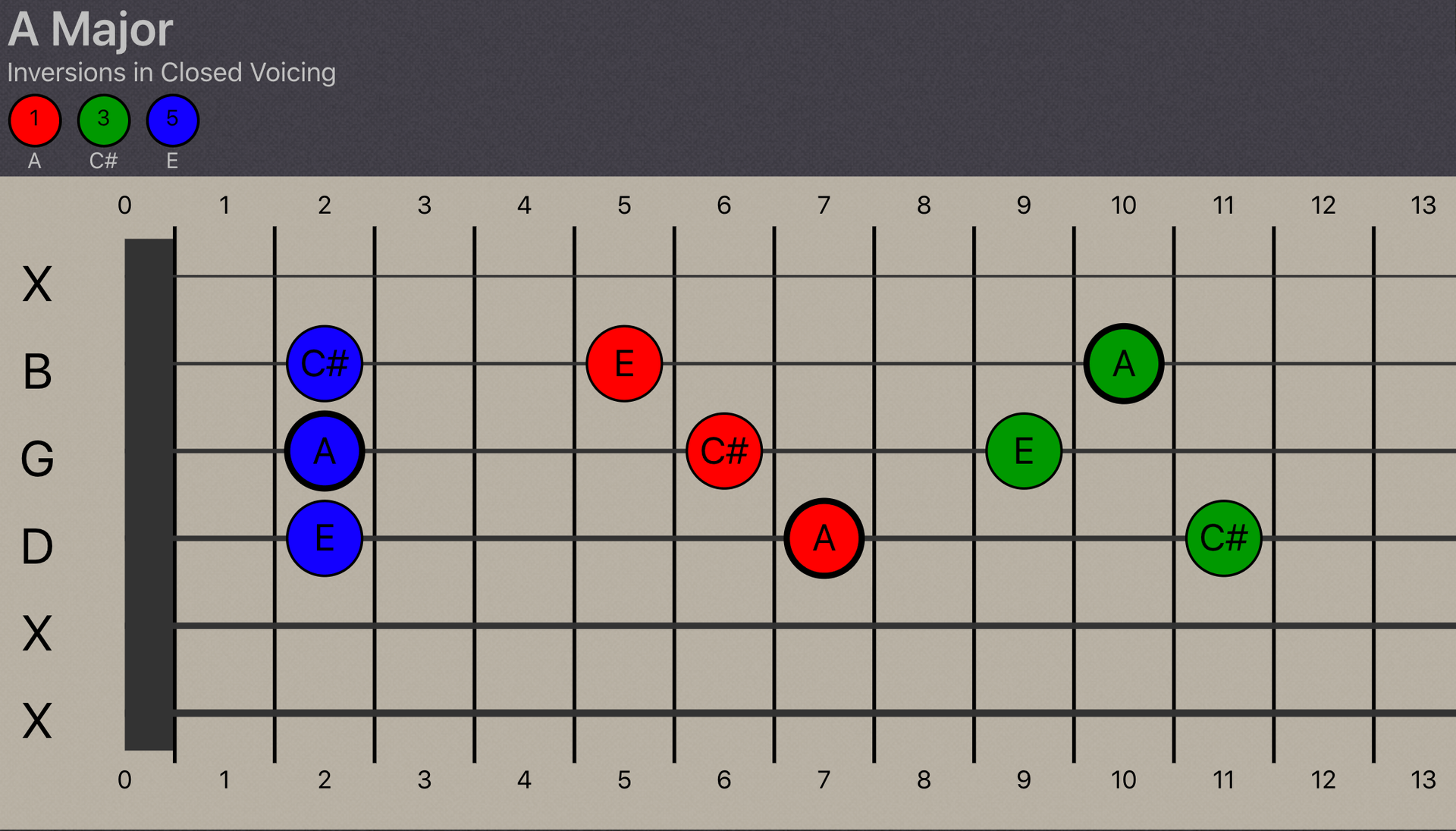This article intends to help those who are comfortable moving between three-note closed voicing inversions along the length of the strings, but desire more interesting practice applications. In and of itself, moving between each inversion (as explained here) isn’t particularly interesting, creative or fun to practice. Hopefully, the ideas discussed throughout this post will help individuals create specific and articulate exercises that advance personal ambitions.
Applying A Specific Picking Pattern
There are a range of different picking patterns, methods and techniques. In some cases, the technique is intimately linked to the style or genre of music, a classical guitarist will pluck the strings with their fingers, heavy rock guitarists usually use a pick, and some guitarists hold a pick and use their fingers simultaneously, what is known as hybrid picking. Reggae and Ska guitarists heavily utilise upstrokes for off-beat rhythms, whereas punk and rock guitarists will often favour downstrokes for a heavier sound.
Types Of Picking Techniques & Styles
- Downstokes
- Upstrokes.
- Alternate Picking
- Inside / Outside Picking
- Hybrid Picking
- Economy Picking
- Sweep Picking
- Rest Stroke Picking
- Free Stoke Picking
- Fingerstyle Picking
- Cross-picking
- Banjo inspired forward and backward roll picking
- and many more…
It’s important to remember how each person strikes a string characterises their own unique style, technique, tone and idiosyncrasies, developing and fine-tuning these aspects are somewhat introspective but also potentially challenging to master. Although this article focuses on alternate picking, the concept of using three note chord voicing and their inversions along the length of the string provides a means of applying a range of picking techniques across a select number of strings. Allowing for practical exercises that combine the technical, rhythmic and harmonic into a single symbiotic process.
Alternate Picking
Alternate picking is where the pick / plectrum moves in an alternate direction between each moment the string is struck. Often people will explain this using “Down“, meaning the wrist or arm motion moving towards the floor, and “Up“, meaning the opposite motion is moving towards the head. On the sheet music further down, these motions are symbolised on sheet music underneath the stave notation and above the guitar tab.
Alternate Picking Patterns Using Three Note Chords.
Using alternate picking to create flowing arpeggios through each inversion provides a great exercise for improving the fretting hand and picking hand coordination as well as potentially improving rhythmic intuition. Watch the video below for an example of how someone may use FretHarmony to help develop practice.
Each example in the guitar tab/sheet music above shows how an alternate picking pattern could apply to a three-note chord across each inversion along the length of the string. Furthermore, the third and fourth examples show a different rhythmic motif applied across the pattern. The final example on the sheet shows starting the pattern on a different note of the chord voicing.
Creative Variation Of Alternate Picking (using only three-note closed voicing along the strings)
It’s significantly more challenging than the initial exercise and requires a greater focus on technique in both hands. Additionally, it enables a focus on rhythmic patterns, devices, motifs and timing, allowing the foundations from which to build practical exercises that combine harmony, rhythm and technique together to create a single symbiotic process. It’s a powerful concept, as exercises can be incrementally changed to meet different practical requirements.
Inverting Alternate Picking Patterns
Each of the above patterns starts on a down stroke; simply starting each exercise on an upstroke and inverting the original picking pattern doubles the number of potential exercises. Applying these strategies in practice reveals some intriguing insights into potential technical obstacles and opportunities.
Potential Opportunities And Pitfalls With Alternate Picking
Those who have attempted all ten exercises may have noticed that the direction of pick movement seems counterintuitive—for example, having to upstroke when the string pick is moving towards the floor. Economy picking minimises this movement by always having the picking move towards the floor when changing to a higher-pitched string or vice versa. Gypsy Jazz Rest Stroke picking advocates for always using a downstroke when changing string, partly to increase volume, attack and rhythmic phrasing. However, there are no obvious answers. Many players strictly enforce alternate picking in their technique and style while other may find opportunities to make it more comfortable for speed, volume or rhythmic phrasing. The terms “inside” and “outside” picking are terms used by some shred guitar educators to define the mechanical processes more intricately but these are beyond the scope of this blog post.
Conclusions And Further Thoughts
Using three-note inversions in close voicing are great way to practice learning the notes and sound textures of a fretboard, but simply playing each chord sequentially, with no sense of rhythm is only going to get individuals so far. The exercises explained within this blog identifies a variety of applications for learning any three-note chords alongside rhythmic motifs and technical choices creating an almost symbiotic relationship between each of these concepts. A huge advantage is the potential to create new exercises for specific skill sets, and allows for distinctive differentiation and adaption. See future posts!


